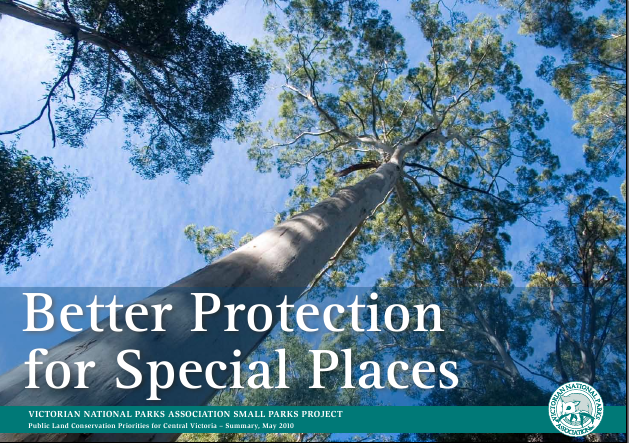Better Protection for Special Places

Cover image: Candlebark in the Wombat State Forest - photo courtesy Tibor Hegedis, Wombat Forestcare
A new report released today has nominated the Wombat Forest a ‘special place’, and called for the Wombat State Forest to become a State Park.
The report, Better Protection for Special Places, released by the Victorian National Parks Association (VNPA), identified the Wombat State Forest as having very high conservation values that required better protection and management. The high conservation values identified included over forty rare or threatened native plant and animal species. The Wombat Forest was also found to contain large areas of threatened native vegetation types.
VNPA Executive Director Matt Ruchel said that “‘most of Victoria’s intact native vegetation and habitat for wildlife is found on public land, and more state forests needed to be converted to state parks”.
“Better protection and management of habitat on public land such as state forest, national parks and reserves are critical to the survival of threatened species and provide the vital foundations to building environments which will stand up to the impacts of climate change,” he said.
In the Victoria Government’s State of the Environment Report (2008), Central Victoria was identified as having significant areas of public land that are not in the parks and reserves. The 2007 Catchment Condition Report also found that parks and reserves in the region tend to be in poor to moderate condition, small in extent and fragmented.
Wombat Forestcare also supported the call for the Wombat Forest to become a State Park.
Convenor, Murray Ralph said that “We have always recognised that the Wombat Forest is a special place. The forest contains over 350 native plant species, including two plant species, the Wombat Leafless Bossiaea and Wombat Bush-pea that are only found in the Wombat Forest plus over twenty five other plant species that are rare and threatened. It provides critical habitat for over 180 native animal species, including 18 species that are rare or threatened. Sixty per cent of vegetation types that occur in the Wombat Forest are classified as threatened”.
“The Wombat Forest definitely deserves greater protection and far better management. Past surveys of community attitudes indicate that most people want the forest managed for its natural values, and the best way to achieve that is make the Wombat Forest a State Park.” he said.
